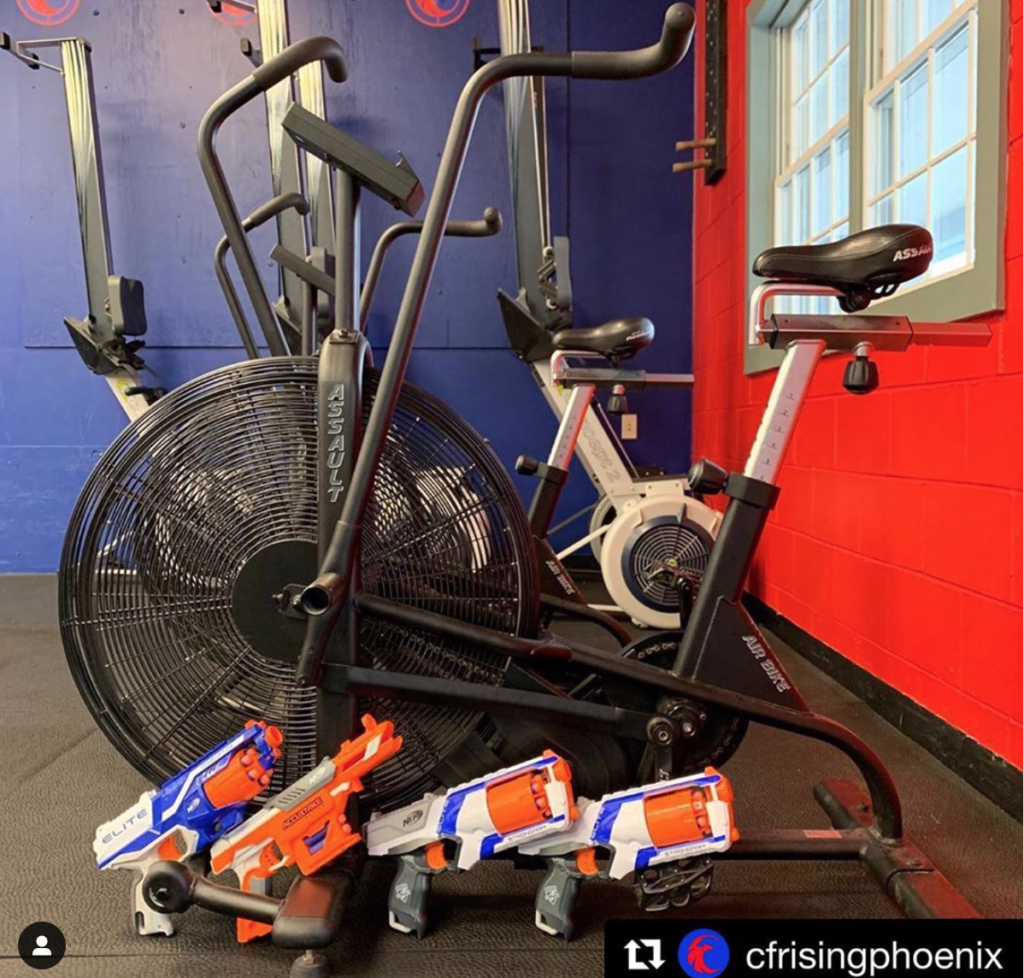My kid needs to get faster on the ice. Do you train with parachutes?
I used to train a lot of hockey players. Every year in early April, I’d start taking calls from hockey parents.
The parents always “knew a little bit” about exercise. They read Men’s Health or saw commercials, and were attracted to trends in fitness. So they’d ask questions like these:
“Will this training really work his core?” (2003)
“I need her to improve her balance” (2005)
“Her foot speed needs to go up” (2009)
“Are you doing those poly-metric things?” (2011)
“Do you use those new parachutes?” (2014)…
In my early days as a coach, I’d spend up to an hour arguing with the parents. Most of the time, they promised to call me back. Then I’d see their kid running with a parachute at the track. Another coach would be holding a clipboard and cashing their check.
I knew I could get the kid better results without the parachute sprints. But if they were training with another coach, I couldn’t help them at all. I was torn between buying flashy toys and sticking with what worked–and many coaches suffer from that same angst. Here’s what to do about it.
Consistency gets results. Novelty gets clients. How do you balance the two?
Well, here’s how our brains work:
Dopamine and serotonin make us happy.
Dopamine is secreted when your brain encounters something novel; and serotonin is secreted when you’re successful at something. The recipe for dopamine + serotonin secretion is to combine exercises that create these feelings:
“This is new!” and “I am good at this!”
This is the secret recipe behind CrossFit’s success. It’s the reason many would-be CrossFitters have gone to Orange Theory; the reason Zwift is king of online training; the reason Strava is the biggest fitness app in the world. It’s also the reason Candy Crush is so addictive: quick wins and new levels. Our brains are attracted to novelty and gold stars. If you don’t include both in your workouts, your clients will seek them elsewhere.
CrossFit used to be novel.
Then CrossFit competitions were novel.
Now Orange Theory (CrossFit + flashing lights) is novel.
How do you take back the novelty, get people into your gym more often, and keep them around long enough to get results?
Here are six tips:
- Increase the variance.
The programming on CrossFit.com has more novelty than most CrossFit Affiliates use. We don’t include 10k runs in our gyms; we don’t dedicate days to improving our rope climbs. CrossFit uses a broader range of tools than most, but that range is still a tiny slice of the pie. Remember when CrossFit had odd-object lifting, Strongman stuff, and Parkour?
What if I told you the original CrossFit gym used bicycles?
What about swimming, or long-distance running? Why are these once-per-year events?
How about bike and gun biathlons?
- Increase the 1:1 time.
Your clients attend your gym to solve THEIR problems, not to get better at CrossFit/bootcamp/pilates. You need to explain how your workouts solve their problems. This is true before they sign up, during your on boarding process, and then forever. Meet with them privately for goal reviews; explain the “why” of your workouts in class. Every. single. day. - Broaden your fitness horizon.
Instead of taking your weightlifting knowledge from an 8 to a 9, get better at running.
Take a yoga course. Learn Pilates. Enter a mountain bike race. Start grappling.
The new connections you create will make you a better coach. And returning to “beginners mind” will help you see your gym through your clients’ eyes. - Add limitations to your programming.
Let’s pretend you had to program an entire month using only a set of rings and a plyo box.
Veteran coaches would think, “Oh boy!” and come up with constantly varied, functional programming that improved the fitness of their clients.
Novice coaches build their programming around their equipment. We call this “Features-based programming” instead of “Benefits-based programming”. Novices struggle with limitations; but the limitations make you better. - Marry two other concepts together.
The most successful entrepreneurs aren’t inventors; they’re connectors. When CrossFit started to become popular in the strength community, many veteran coaches complained: “I’ve been doing that stuff all along! I just didn’t have a name for it!” Many were jealous of CrossFit’s success. But what they hadn’t done was create a fun, intense combination of “that stuff” that hooked people.
- Add the occasional FUN element. What’s the true risk:reward value of a Ninja Warrior obstacle course? It’s very low. It’s testing, not training, and that means high risk of injury for low fitness results. But they sure are FUN. The same can be said for tire flips, parkour,
How much novelty do you need?
Following “A Theoretical Model for CrossFit’s Programming” is a good way to start your group programming template. But you need more. Start with these suggestions and tweak according to your gym:
1 – Hero or Baseline WODs: at least once every two weeks. Repeat each one 2-3 times per year.
2 – Specialty groups: dictated by client demand. Offer at least 4 per year.
3 – Competitions or events: one every quarter. Don’t stick with CVFMHI competitions (one of those is plenty). Run a Midnight 5k, sign up a big team for an obstacle race, draft up a Summer League, and run the Intramural Open.
4 -New exercises: add them into the skill portion of your class for a few weeks before introducing them to a WOD. There’s nothing more frustrating than having everyone scale their pistols because no one can do them!
5 – Celebrate: high fives with personal feedback daily; Bright Spots Friday every week; PR phone calls every month; Goal Reviews every quarter.
You can’t change a life in six weeks. The intensity of your workouts doesn’t build lifelong fitness; the ability to keep a client for decades does. That might mean less screaming and more fun.


